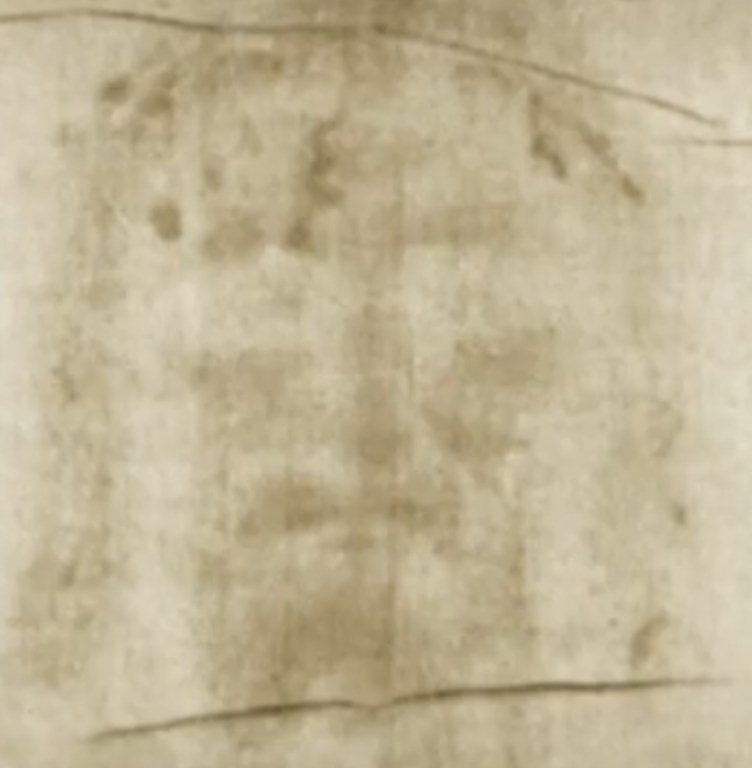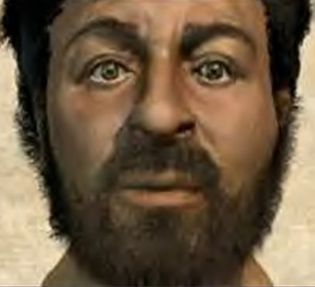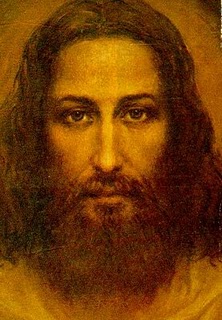Bible | Movies | Books | People | Hot Topics | Holidays | Humor | Gallery | Sanctuary | Sermons | Prayer | Quizzes | Communities | God | FAQ | Links
|
Sponsored Link |
Once again the Shroud rises, as it were, from the grave, attempting to make its way from medieval relic to the realm of modern science and technology. The Shroud itself is on public display at the Catholic Cathedral of Turin, Italy. About two million people -- including Pope Benedict XVI -- are expected to view the Shroud while it's on view for six weeks in April and May, 2010. It is perhaps fitting that the Pope would travel to Turin to visit the Shroud during a time when he faces up to his own humiliation over the handling of the child abuse scandals in his church. Is this pilgrimage by way of expiation, or is it merely an attempt to change the subject? In any case, Benedict is not the only one to welcome the Shroud's reappearance. The History Channel recently focused on it, airing "Shroud of Turin: The Real Face of Jesus," during Holy Week. If you thought that programmers at the History Channel might come up with a dispassionate analysis of what we know about the Shroud, forget-about-it. This was infotainment at its worst. With suggestions that their methodology was somehow scientifically grounded, producers of the show invited Ray Downing, a graphic artist, to convert the vague, two dimensional image on the Shroud, into a full color, highly detailed 3D illustration. I have reproduced part of his work, that having to do with the face of Jesus, below. Boy, was Downing creative! One could, of course, expect as much from a show which promises to reveal for the first time in all of human history, "The Real Face of Jesus!" Downing purports to do even more. He reconstructs the entire body, from head to toe, with every strand of hair, every wound and scar in photorealistic detail. As the promo piece on Downing's website puts it: "Science and religion join together, bringing cutting-edge computer technology to an ancient stretch of fabric, and creating a living, moving 3D image of the man." The only problem is, this "real Jesus" ends up looking a lot like the Renaissance paintings that were being produced by the artists of France and Italy during the time that the Shroud first, mysteriously appeared. (Note the side-by-side comparison at the bottom of this page.) To me, the visage in this photo more closely resembles an Italian fashion model or movie star than a native of first century Galilee and Judea.
Further, those who are familiar with how to use 3D computer graphics software can confirm that there is more artistry than science involved in creating such an image. It is not surprising that this image of the face and figure of Jesus so nicely resembles the public's preconception of how Jesus must have looked. This face has become very familiar to us after centuries of viewing the art treasures of the Western canon. The fact is, no one knows what Jesus of Nazareth actually looked liked, and this 21st century effort brings us no closer to the living Christ. Rather, it reminds us why Hebrew Bible prophets and 16th century reformers attempted in God's name to do away with such idols and icons. By confusing fiction and fact, by substituting superstition for "a faith in things unseen," and by placing a relic where the living God belongs, such images become lethal to genuine piety, let alone understanding. Note how the distinctive features of Antonio Allegri's 16th century painting on the left include the long, thin nose, refined lips, and gracefully curly hair. These are all signature qualities of a Renaissance painting of Jesus and are mirrored in Ariel Agemian's work from 1935, nearly 400 years later. The Ray Downing rendering of the Shroud image is remarkably similar. By contrast, the BBC commissioned an artist to build the face of Jesus around an actual skull found in what would have been Galilee or Judea. Notice the darker complextion, wider nose, thicker lips. This image may not tug on the heart strings, but it just might be a closer gestimate of what the historical Jesus looked like.
For more on the "Face and Figure of Jesus."
Please take a moment to let us know you
were here!
If you want to talk with someone in person, please feel free to call 917-439-2305
The Rev. Charles P. Henderson is a Presbyterian minister and is the author of God and Science (John Knox Press, 1986). Charles also tracks the boundry between the virtual and the real at his blog: Next World Design, focusing on the mediation of art, science and spirituality in the metaverse. For more information about Charles Henderson. |
Sponsored Link
|
||||||||||||||




